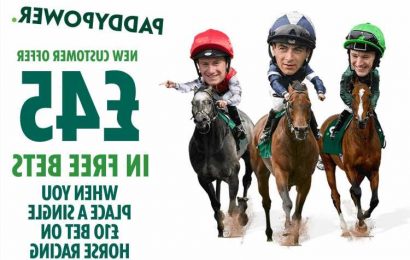He stood 5 feet 7 inches tall and had an unforgettably French Canadian name — Pierre LePage — but his skill with a bat was what made a lasting impression. His hand-eye coordination beggared belief, and it was matched with his barrel control. In three seasons at the University of Connecticut, he batted .336. In his junior year, he took 248 trips to the plate and struck out only three times.
LePage never made it past Class A in the minor leagues, but a few guys in the majors still remember him fondly. Nick Ahmed, the shortstop of the Arizona Diamondbacks, and Pete Fatse, Boston’s hitting coach, were LePage’s teammates at UConn and both, from time to time, think back on the show that LePage would put on when he stepped into a batting cage.
Instead of tape-measure blasts, LePage would show off a much more unorthodox skill.
“He could foul the ball straight back during batting practice on command,” Ahmed said. “Just a different level of bat control.”
Like many college standouts, LePage could not find his footing in pro ball. Over the last decade, as teams have chased exit velocity and the long ball, the value of such high-contact, low-impact hitters has tanked. Luis Arraez of the Miami Marlins has tantalized the baseball world this season by flirting with a .400 batting average, but his singularity only emphasizes a reality observed by nearly every other hitter: adapt or be left behind.
Ahmed, who still marvels at LePage, is one of the batters who adapted. Where he once emphasized contact, he is now “trying to move to the other end of the spectrum.”
With the slow elimination of the nettlesome contact hitter, it seems, the game has also lost one of its more esoteric arts. It was once common for batters to intentionally fight off pitches at the edge of the strike zone, sending them into the crowd as foul balls to keep themselves alive and wait for something they could hit more cleanly. Now, fewer hitters of that stripe earn regular at-bats, and others have changed their tactics in a sport awash with batted-ball data.
‘The idea is to square the ball up. Going up there with a defensive mentality to try to spoil pitches is not productive.’
Nick Ahmed, shortstop, Arizona Diamondbacks
The ability has survived — perhaps not on LePage’s level — but the willingness has evaporated.
“The game is making us change our approaches,” said Wilmer Flores, an infielder for the San Francisco Giants. “My approach was not to strike out and put the ball in play with two strikes. Put it in play wherever it is. Then I would chase bad pitches. This game, if you slug or if you take a borderline pitch, it’s OK. If you walk, it’s a victory. At the end of the year, no one’s going to see ‘He put the ball in play with two strikes and brought the runner home from third base.’”
Twenty years ago, even during the heart of baseball’s steroid age, priorities were different.
“In my era, we were embarrassed if we struck out,” said Mark Grace, a Chicago Cubs star who retired in 2003 after a 16-year career. With two strikes, hitters would choke up and protect the plate. “Barry Bonds choked up, Barry Larkin choked up,” Grace said.
Many of today’s hitters, by contrast, feel uncomfortable without a finger or two on the knob of the bat.
Grace is not bemoaning the state of the modern game as much as appraising the shift in its cost-benefit analysis. Around the time he retired, teams began to value on-base percentage more than batting average. More recently, technology has allowed teams to boil down hitting to its component parts. The metric with the tightest correlation to offensive production is exit velocity. So, even with two strikes, why take a different swing that is engineered to make worse contact?
‘In my era, we were embarrassed if we struck out. Barry Bonds choked up, Barry Larkin choked up.’
Mark Grace, retired first baseman
“The idea is to square the ball up,” Ahmed said. “Going up there with a defensive mentality to try to spoil pitches is not productive.”
To be sure, spoiling pitches still happens. In fact, foul-ball rates have been remarkably consistent since pitch data first became available in 1988, and long plate appearances have become even more common over time. But some modern hitters question if any of those foul balls are really being hit intentionally.
If a hitter nicks a borderline pitch to extend an at-bat, that may say more about the pitcher than the hitter. “It’s just the nature of the pitch,” Flores said. “It’s hard to square up.” Batters may shorten their strides or react just a bit later in those situations to maximize their chances at contact, but they are still looking to hit the ball hard, not deflect it out of play.
“From what I know about hitting,” said Christian Walker, a power-hitting first baseman for the Diamondbacks, “it seems impossible that somebody’s doing that on purpose.”
Older hitters beg to differ. The former big-leaguer Jon Jay, now a coach with the Marlins, said he used to work on spoiling pitches in the batting cage. Grace admitted he sometimes swung for foul territory as a player, though with limited effectiveness.
“I put more balls in play trying to foul balls off than I actually fouled balls off,” he said.
Tony Gwynn was the best at it, Grace noted, though Ahmed argued that Gwynn had it easier than today’s hitters. Gwynn “wasn’t facing guys who were throwing 95 to 100 m.p.h. every night,” he said.
‘There will be a demand for guys who can control the bat and bunt and get guys over in the not-too-distant future.’
Joey Votto, first base, Cincinnati Reds
The one active hitter (with the likely exception of Arraez) that multiple big-leaguers say could still do it is Joey Votto, a stalwart veteran on a Cincinnati Reds squad filled with talented youngsters.
“I can,” Votto said in a phone interview, “but I don’t do it as much.”
Back when the front-hip sinker was “a part of right-handed culture,” Votto, a left-handed batter, said he would purposefully foul off those pitches so he could cover the rest of the plate. No one attacks him that way anymore, so he’s shelved the party trick. He bets plenty could still do it — if they wanted, big-leaguers could “attempt to hit bases” during a game, he said — but the likely outcome would not be worth the effort. There might be one plate appearance a series, he thinks, when it would pay off.
If such a feisty, contact-oriented approach has ebbed, will it ever return? Some, like Ahmed and Flores, who have abandoned that style of hitting, think it will not.
“It doesn’t get you paid anywhere now,” Flores said.
But baseball has undergone significant change this year, with the introduction of the pitch clock and restrictions limiting how teams position their infielders. As a result, the game is faster, stolen bases are up and holes once covered by a shift sit open. For that reason, Votto predicts a return of the pesky, indefatigable contact hitter.
“There will be a demand for guys who can control the bat and bunt and get guys over in the not-too-distant future,” he said.
‘If you get a slider low and away, instead of swinging through it, wouldn’t you want another pitch?’
Pierre LePage, former infielder, University of Connecticut
Fatse agrees. The home-run hitter will never go out of style, but a good lineup is diverse in its skill sets.
“It’s not a lost art,” he said.
There are plenty of guys who can do it. He watched one in college.
LePage could foul them off with the best of them. Reached by phone, the former infielder revealed it was a skill he’d practice. Outside of team workouts, he’d head to a local batting cage, feeding quarters in the machine and then simulating different pitch locations by standing in a variety of spots. His only goal: to foul each pitch back.
“People watching probably thought I was pretty bad,” LePage said.
Far from it. A 13th-round draft pick in 2010, he played two season in the minors, hitting .303 but not providing much pop. Then he got hurt, was released and wrapped up his playing career with one season in independent ball, where he once again teamed with Fatse.
LePage, who works in insurance these days, has few regrets. But baseball’s homer- and strikeout-happy turn has left him puzzled.
“If you get a slider low and away,” he said, “instead of swinging through it, wouldn’t you want another pitch?”
Then again, fouling a ball off was easier for him than it was for just about anyone else.
Source: Read Full Article











